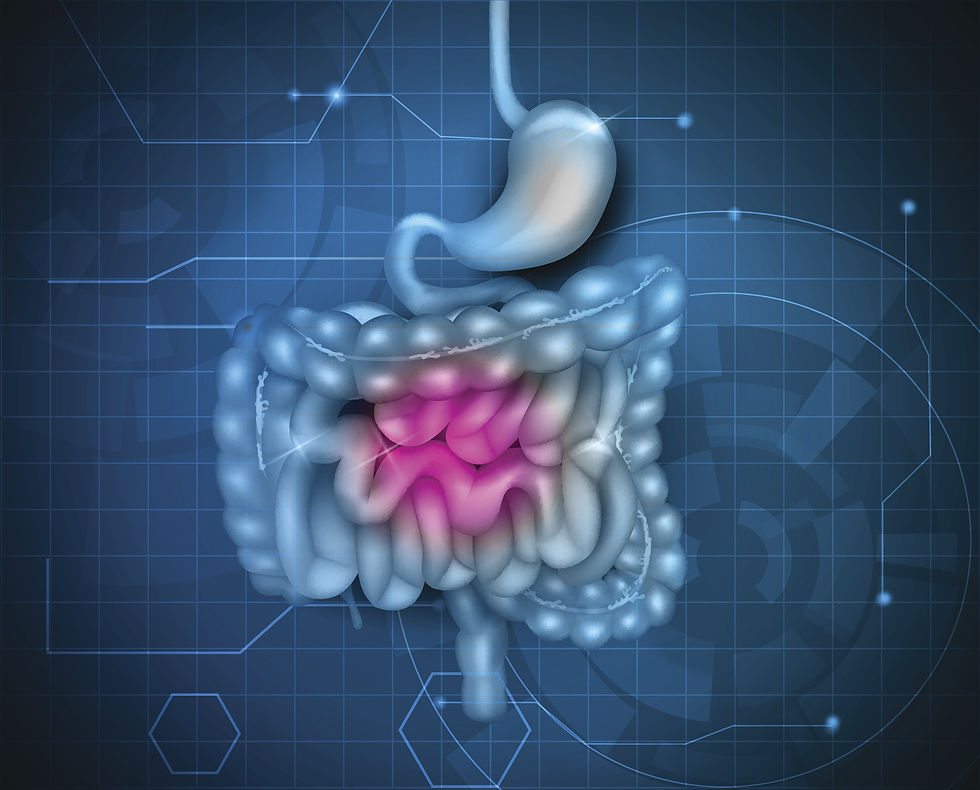Heal, from the inside out – omega 7 !
- Ella Ödman

- Jun 12, 2023
- 3 min read
Updated: Jun 12, 2023
omega-3, omega-6, and omega-9 are most likely to come to mind when thinking of omega fatty acids. Until now scientists have been focusing more on the omega-3 fatty and their cardiovascular benefits.
It’s only been 10 years approximately that omega-7s have become 'more of a thing'. The fatty acids’ status as a non-essential nutrient and its scarcity in food, especially compared to omega-3s, may have discouraged scientists from digging into it.
However, it's making its way into public consciousness because of its benefits for overall health - see below...

photo alaskapmega7
What are Omega-7 fatty acids ?
They are a class of unsaturated fatty acids in which the site of unsaturation is seven carbon atoms from the end of the carbon chain. The two most common omega-7 fatty acids in nature are palmitoleic acid (PA) and vaccenic acid (VAC). The health benefits
The following characteristics have been observed in studies involving humans, animals, and/or cultured cells when treated with the fruit, the oil, the nut or other forms of extract.
Omega-7s may play a role in many areas necessary for promoting and maintaining good health, such as :
increasing levels of HDL cholesterol and lowering levels of LDL cholesterol.
preventing the accumulation of cholesterol and lipid deposits in blood vessels.
preventing and treating chronic dry eye syndrome, symptoms and disease.
reducing fatty liver disease and dyslipidemia.
reports have also shown that this fat functions as a lipid hormone (lipokine) that stimulates muscle insulin action, regulating glucose metabolism, insulin sensitivity.
better skin hydration and skin conditions (eczema, psoriasis, dermatitis... ).
omega-7 is vital to collagen production. This makes it an ideal base to promote healthy skin, hair and nails.
Gut health
Moreover, Omega-7 is great for supporting the most delicate tissues in the body.
It supports a healthy gastrointestinal and digestive system from start to finish.
This fatty acid nurtures mucous membranes starting from the buccal mucosa of the mouth all the way through to the end of the digestive tract, balancing digestive functions.

Image: TefiM/Getty Images
Studies claim that palmitoleic acid changes the composition of gut microbiota by decreasing 'bad' gut bacteria whilst increasing the 'good'. In colon, PA increases intestinal tight junction integrity, reducing leaky gut syndrome and inflammation.
Menopausal health
Something no one talks about is that during menopause, women can suffer from dryness due to hormonal changes, causing symptoms like dry skin, vaginal dryness and dry eyes, among others…In a study, a total of 116 postmenopausal women were given 3 grams of PA daily vs a placebo. Compared to placebo, there was a significantly better rate of improvement in the integrity of vaginal epithelium in the PA group…”
Where Can You Find Omega-7 Fatty Acids?
Palmitoleic acid is fairly rare in that there are only a few known dietary sources that contain a meaningful amount.
Rich sources include macadamia nut oil and sea buckthorn (berry) oil in the form of palmitoleic acid. A lesser but useful source of palmitoleic acid is avocado, anchovies and chicken skin (love crispy chicken skin).

Sea buckthorn
is a tall shrub and its fruit or berries are high in Omega 7.
Don’t buy the seed oil, it hardly contains any PA. Other properties of sea buckthorn:
Super high in Vitamin C
Rich in Vitamin A, E, B1 and K
Contains iron, Potassium
Antioxidants - combating cellular anti-aging
*Interestingly, sea-buckthorn fruit was known and valued already in the ancient times, in particular, in traditional Asian medicine. It should be noted that the generic name of the plant, Hippophae, originated in ancient Greece, where sea-buckthorn was fed to horses to make their coats nicer and more shiny (Greek hippos – horse; phaos – shiny)…
Macadamia nuts
This is what makes macadamia nuts so special (besides it's yummy taste) ... it's high amount of palmitoleic acid! (since they're one of just a few foods that contain them).
These nuts are composed of monounsaturated fats (MUFAs), which are much better than polyunsaturated fats (PUFAs) for cooking. It also contains up to four times as much vitamin E than olive oil. Vitamin E is an antioxidant that works to prevent cataracts, cancer, cell damage and the formation of free radicals, and cardiovascular disease.
Note: Sea Buckthorn oil also contains Omega 3, 6, and 9 fatty acids, which you may already be getting from your diet (fatty fish, olive oil, etc.) Omega 7 will be lacking from most of those sources.
Final thoughts
Sea Buckthorn berry oil contains about 30% palmitoleic acid (Omega-7).
Macadamia Nut oil contains about 20% palmitoleic acid.
One tbs of macadamia nut oil contains 2.7 grams of palmitoleic acid, but also contains, obviously, more fat than Sea Buckthorn.
Sea buckthorn oil is more expensive and you aren't going to cook with it.
If you supplement, look for a brand that has undergone a thorough purification process to eliminate all traces of palmitic acid. These Omega 7 supplements are labeled: “Purified Omega 7″ or ” Palmitic Acid-Free”.
Another interesting product is called Provinal (from anchovies) http://www.provinal.net/about/
Get in touch for more information :-)
References:
https://www.ncbi.nlm.nih.gov/pmc/articles/PMC3155149/



Comments